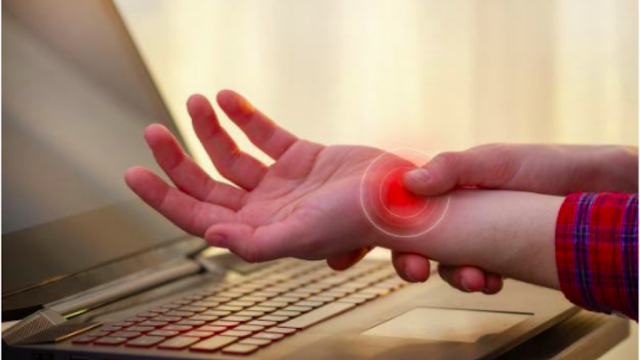Trigger Finger - Causes and Treatments
Trigger finger is a condition that causes pain, stiffness, and a sensation of locking or catching when you bend and straighten your finger. The condition is also known as “stenosing tenosynovitis.” The ring finger and thumb are most often affected by the trigger finger, but it can occur in the other fingers, as well. When the thumb is involved, the condition is called “trigger thumb.”
The flexor tendons are long cord-like structures that attach the muscles of the forearm to the bones of the fingers. When the muscles contract, the flexor tendons allow the fingers to bend. Each of the flexor tendons passes through a tunnel in the palm and fingers that allows it to glide smoothly as the finger bends and straightens. This tunnel is called the “tendon sheath.” Along the tendon sheath, bands of tissue called “pulleys” hold the flexor tendons closely to the finger bones. The tendons pass through the pulleys as the finger moves. The pulley at the base of the finger is called the “A1 pulley.” This is the pulley that is most often involved in the trigger finger.
In a patient with a trigger finger, the A1 pulley becomes inflamed or thickened, making it harder for the flexor tendon to glide through it as the finger bends. Over time, the flexor tendon may also become inflamed and develop a small nodule on its surface. When the finger flexes and the nodule passes through the pulley, there is a sensation of catching or popping. This is often painful. In a severe case of the trigger finger, the finger locks and becomes stuck in a bent position. Sometimes the patient must use his or her other hand to straighten the finger.
While the causes of trigger finger are not well known, several factors may increase your risk for developing the condition. These include:
Medical conditions. Trigger finger is more common in people with certain medical conditions, such as diabetes and rheumatoid arthritis.
Forceful hand activities. The condition is known to occur after forceful use of the fingers and thumb.
Symptoms of trigger finger often start without a single injury. They may follow a period of heavy or extensive hand use, particularly pinching and grasping activities.
Symptoms may include:
A tender lump at the base of the finger on the palm side of the hand
A catching, popping, or locking sensation with finger movement
Pain when you bend or straighten the finger
Stiffness and locking tend to be worse after periods of inactivity, such as when you wake up in the morning.
In a severe case, the involved finger may become locked in a bent position. Your doctor will be able to diagnose a trigger finger by talking with you about your symptoms and examining your hand. Typically, x-rays or other tests are not needed.
During the exam, your doctor will look for:
Tenderness over the flexor tendon sheath in the palm of your hand
Thickening or swelling of the tendon sheath
Triggering when you bend and straighten your finger
Initial treatment for a trigger finger is usually nonsurgical.
Rest. Resting your hand and avoiding activities that make it worse may be enough to resolve the problem.
Splinting. Wearing a splint at night to keep the affected finger or thumb in a straight position while you sleep may be helpful.
Exercises. Gentle stretching exercises can help decrease stiffness and improve range of motion in the involved digit.
Medications. Over-the-counter medications, such as acetaminophen and nonsteroidal anti-inflammatory drugs (NSAIDs), can help relieve pain and inflammation.
Steroid injections. Corticosteroid, or cortisone, is an anti-inflammatory agent that can be injected into the tendon sheath at the base of the trigger finger. A steroid injection may resolve the triggering over a period of one day to several weeks. If symptoms do not improve with time, a second injection may be given. If two injections do not help the problem, surgery may be considered.
If your finger does not get better with nonsurgical treatment, you may wish to consider surgery. Surgery is elective. The decision for surgery is based on how much pain or loss of function you have in your finger. If, however, your finger or thumb is stuck in a flexed or bent position, your doctor may recommend surgery to prevent permanent stiffness.
Surgical procedure. The surgical procedure for trigger finger is called “tenolysis” or “trigger finger release.”
The goal of the procedure is to release the A1 pulley that is blocking tendon movement so the flexor tendon can glide more easily through the tendon sheath. Typically, the procedure is done in an outpatient setting with an injection of local anesthesia to numb the area for surgery.
Recovery. Most patients are encouraged to move their finger immediately after surgery.
It is common to have some soreness in your palm. Elevating your hand above your heart can help reduce pain and swelling. Although your incision will heal within a few weeks, it may take from 4 to 6 months for swelling and stiffness in your hand and fingers or thumb to go away completely. If stiffness, swelling, or pain persist after surgery, your doctor may recommend seeing a hand therapist.


Comments
Post a Comment